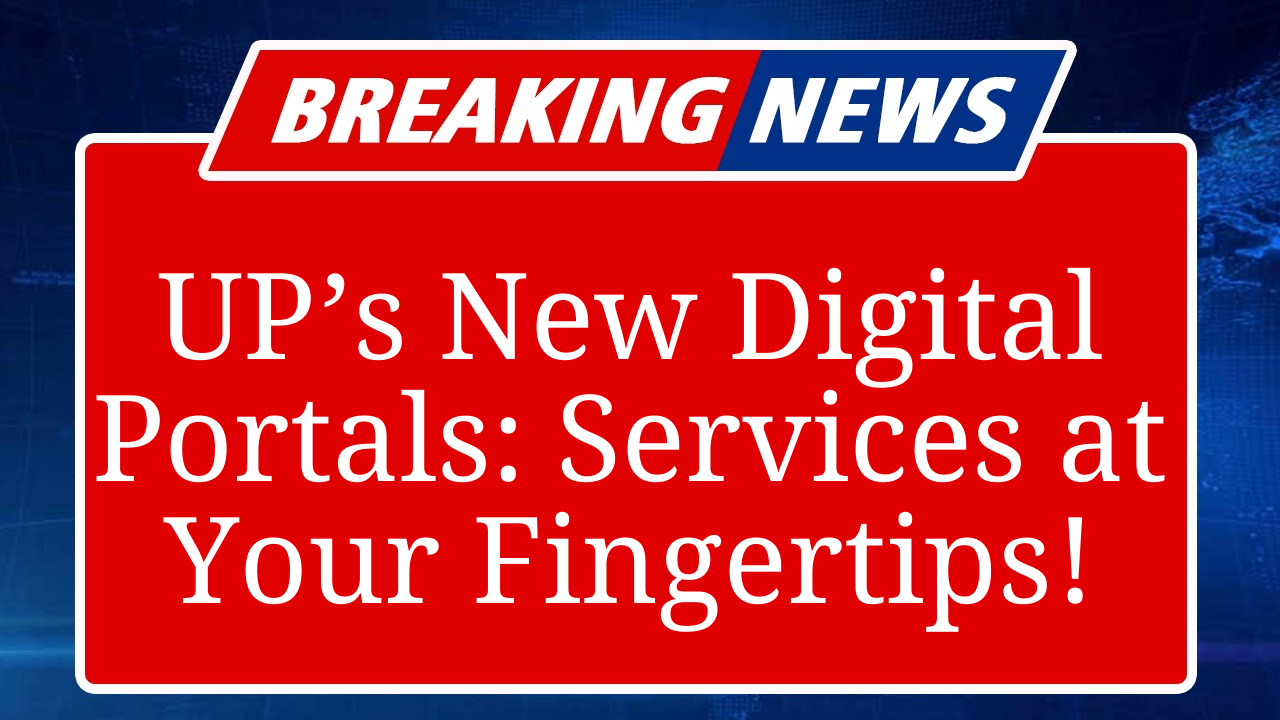Uttar Pradesh has introduced advanced citizen service portals under its e-governance initiative, aiming to streamline access to government services. These platforms offer digital solutions for tasks like bill payments, certificate issuance, and grievance redressal, enhancing transparency and efficiency. The move aligns with Digital India, targeting improved citizen engagement and reduced bureaucratic delays for millions across the state.
Uttar Pradesh Unveils Cutting-Edge Citizen Service Portals
In a significant push toward digital governance, Uttar Pradesh has rolled out a series of new citizen service portals under its e-governance framework, designed to make government services more accessible, transparent, and efficient. Announced in August 2025, these portals are part of the state’s broader commitment to the Digital India initiative, aiming to bridge the gap between citizens and government processes.
The new portals, integrated with the state’s Lokvani Project and other e-governance platforms, provide a single-window solution for a range of services, including utility bill payments, issuance of certificates such as birth and death certificates, and land record management. Citizens can now access these services from the comfort of their homes, reducing the need for physical visits to government offices. For instance, the updated Lokvani portal allows users to file grievances, track their status, and receive real-time updates, addressing long-standing issues of bureaucratic delays.
According to data from the Uttar Pradesh State e-Governance Agency, over 1.5 million citizens have registered on these platforms within the first month of their launch, with more than 300,000 transactions recorded for services like vehicle registration and tax payments. The portals are powered by the Digital Infrastructure for Governance, Inclusion, and Transformation (DIGIT) platform, an open-source system that ensures scalability and interoperability across departments. This infrastructure has enabled seamless integration with national initiatives like DigiLocker, allowing citizens to store and access critical documents digitally.
The state has also introduced mobile applications to complement these portals, catering to the growing number of smartphone users. As of September 2025, Uttar Pradesh has over 120 million mobile internet users, and the mobile apps for services like the Integrated Grievance Redressal System (IGRS) have seen a 40% surge in downloads since their launch. These apps provide features like real-time notifications and multilingual support, ensuring inclusivity for rural and non-English-speaking populations.
Security and privacy concerns, a major challenge in e-governance, have been addressed through robust encryption protocols and adherence to the Digital Personal Data Protection Act, 2023. The state government has partnered with the National e-Governance Division (NeGD) to conduct awareness campaigns, educating citizens on safe usage of these platforms. Workshops held in Lucknow and Varanasi in July 2025 saw participation from over 2,000 local officials and citizens, focusing on user experience and data protection.
Uttar Pradesh’s e-governance efforts also extend to rural areas, leveraging the Common Service Centres (CSCs) network. With over 50,000 CSCs operational across the state, these centres act as physical touchpoints for citizens lacking internet access, offering assisted services for online applications and payments. The CSCs have facilitated over 2 million transactions in 2025 alone, particularly for schemes like the Pradhan Mantri Ujjwala Yojana and Aadhaar-related services.
The state’s focus on e-governance aligns with national trends, as India ranks 96th on the United Nations’ E-Government Development Index (EGDI) in 2024, a significant improvement from its 107th position in 2016. Uttar Pradesh’s portals are expected to contribute to this upward trajectory by enhancing service delivery and citizen engagement. However, challenges remain, including the digital divide in rural areas, where only 45% of households have internet access, and the need for continuous training to improve digital literacy.
The government has allocated ₹500 crore for the expansion of these e-governance initiatives in the 2025-26 budget, with plans to integrate artificial intelligence for predictive analytics and faster grievance resolution. Pilot projects in districts like Kanpur and Ghaziabad are already testing AI-driven chatbots to assist users, with early results showing a 30% reduction in query resolution time.
By prioritizing user-centric design and leveraging technology, Uttar Pradesh is setting a benchmark for other states in making governance more inclusive and efficient. The new portals are a step toward realizing the vision of a digitally empowered India, where citizens can interact with the government seamlessly, anytime, anywhere.
Disclaimer: This article is based on information sourced from official government portals, recent news reports, and data from the National e-Governance Division and Uttar Pradesh State e-Governance Agency. While every effort has been made to ensure accuracy, readers are advised to verify details through official channels for the latest updates.

